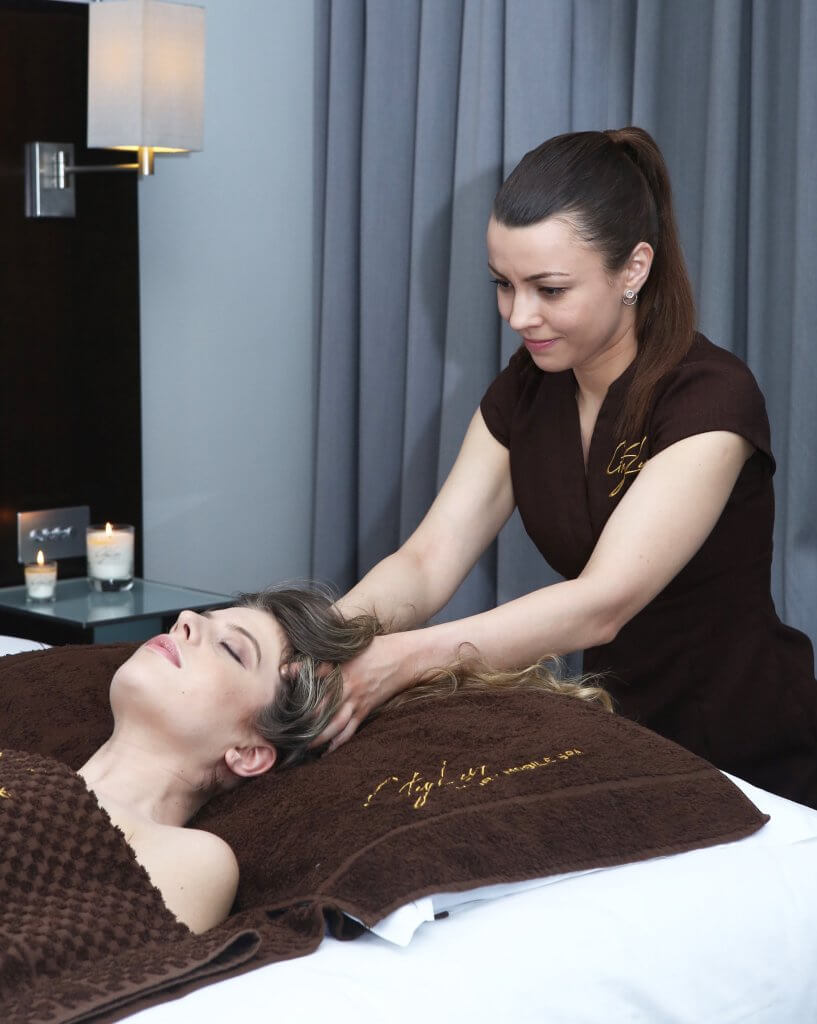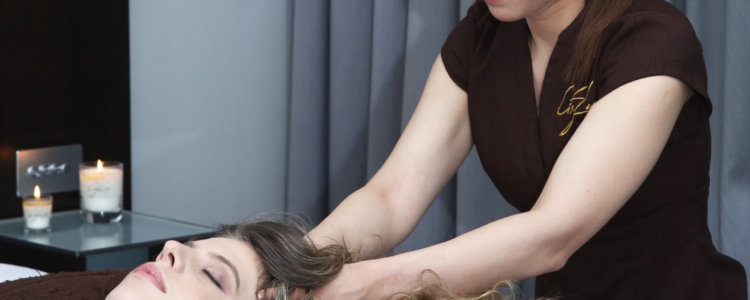In many cultures, head massage has been practiced for hundreds of years as a therapy to reduce stress and tension. Massaging the scalp can relieve migraine headache pain and even encourage hair growth by stimulating blood supply to the scalp. It rejuvenates the spirits, improves mental alertness and increases circulation to the face, head, neck and shoulders.
 What is Indian Head Massage?
What is Indian Head Massage?
Many people spend hours of each day hunched over a computer screen or sitting in the traffic, risking chronic nerve damage to their necks and shoulders. Poor posture and long working hours without adequate breaks can worsen muscle pain. A head massage usually includes a massage of the neck, back, shoulders and scalp, thus relieving pain and tension in these areas. The people of India have incorporated head massage as part of a holistic medicine for generations.
Traditionally, an Indian head masseur would begin by balancing one’s healing energy in a step called “chakra balancing” in order to encourage positive feelings. He or she would then massage the upper back, shoulders and neck and thereafter progress to massaging the scalp and temples in a gentle, circular motion.
A head massage should take at least 45 minutes to complete. A scalp massage that is too hard can cause a headache or even more tension, so make sure your therapist knows if you want a light, medium or deep massage.
Oils for Head Massage
Traditionally, oils such as bhringaraj, brahmi, or amla oils are used for scalp massage. These oils are derived from plants and herbs that Indians have valued for their medicinal properties for thousands of years. Coconut oil is also widely used by therapists for head massage and can be left in the hair for awhile to provide a rich conditioning treatment. Sesame oil is a commonly used for Indian head massage because of its mild odor. Carrier oils such as jojoba or sweet almond can be blended with essential oils of choice.
For example, a few drops of ylang ylang blended with a few drops of carrier oil may be used to help one unwind and relax, while peppermint oil will have a more energizing effect. Discuss oil blends with your massage therapist before starting. Bear in mind that oils applied to the scalp can be difficult to remove from the hair. It may be necessary to wash hair two or three times with a good quality, natural shampoo in order to remove the oil completely. Wash gently, using lukewarm water. Avoid using cold or very hot water directly on oiled hair.
Drink plenty of water to flush the body of toxins after a head massage.

